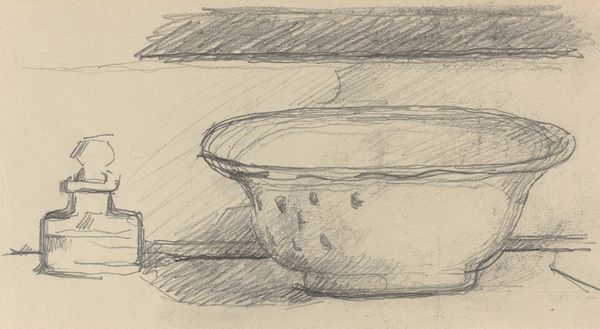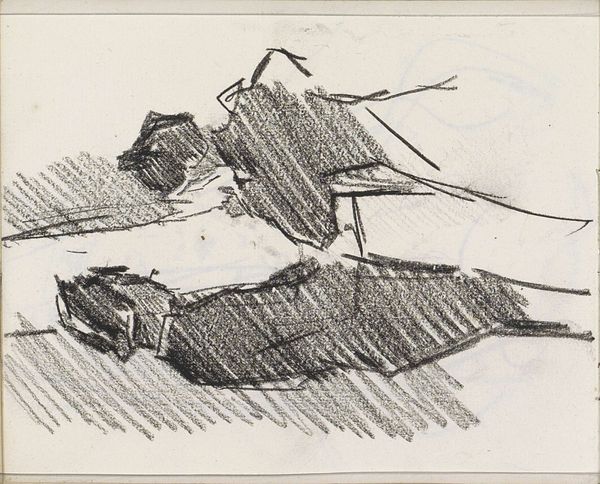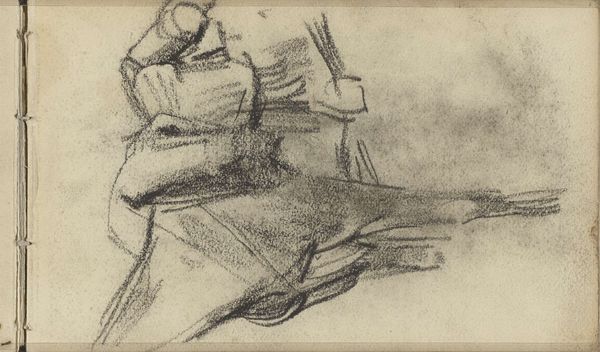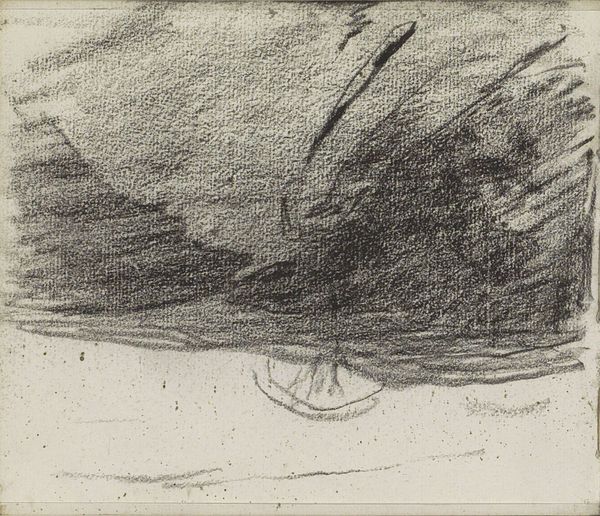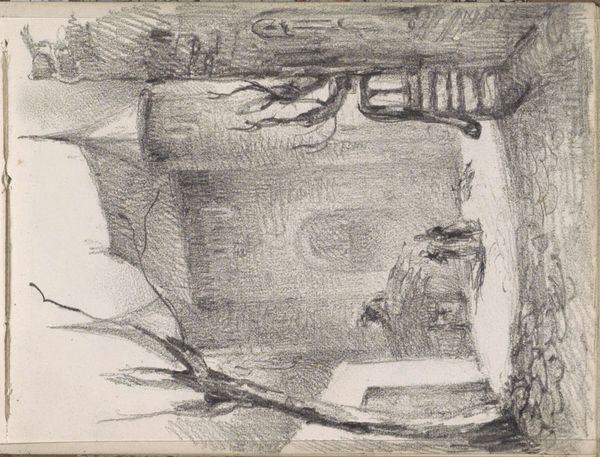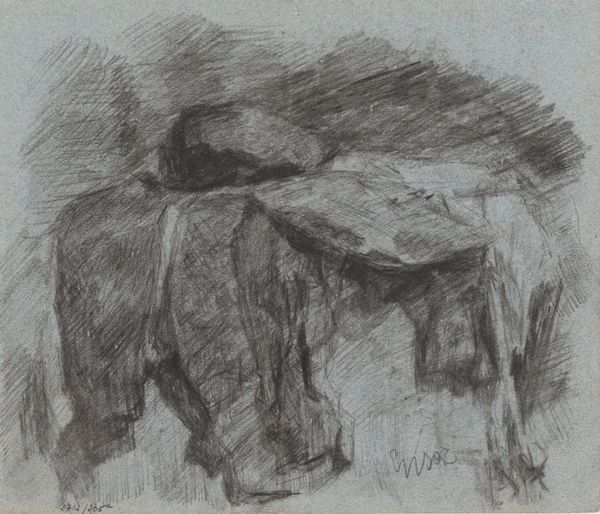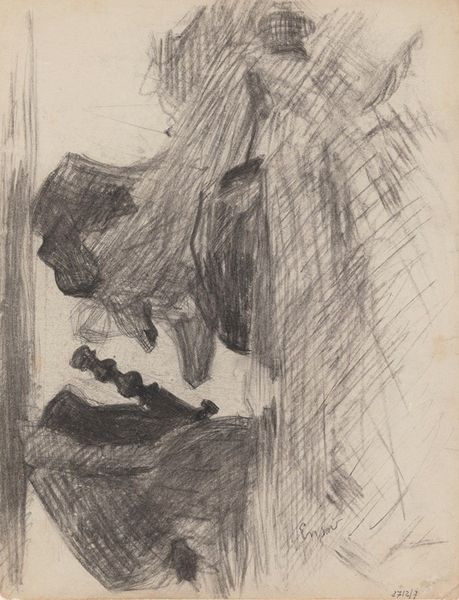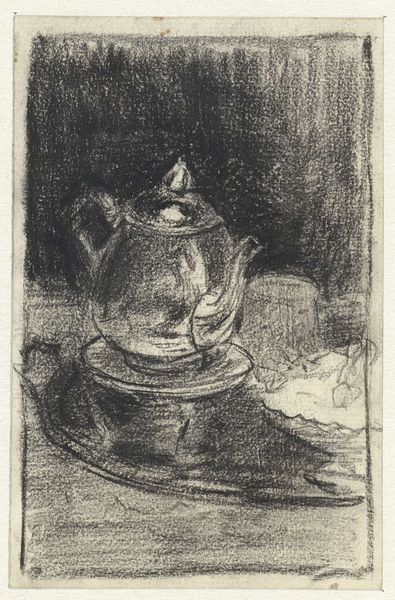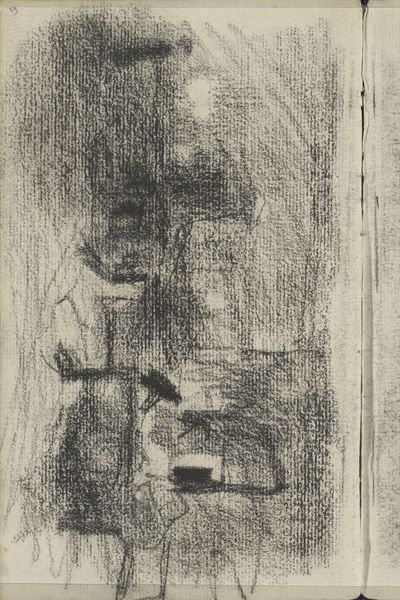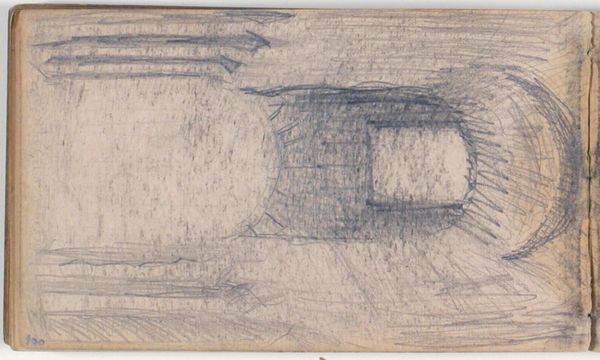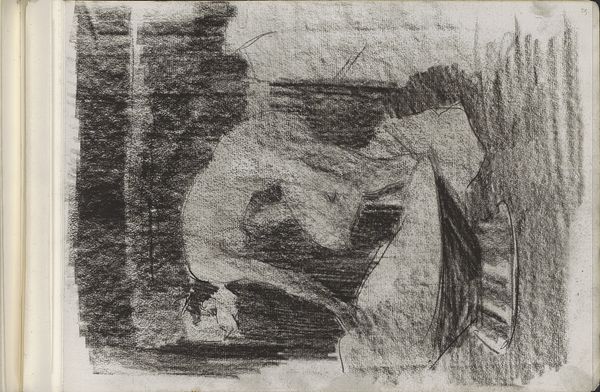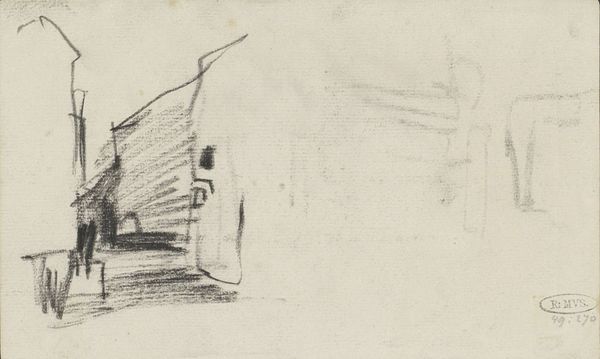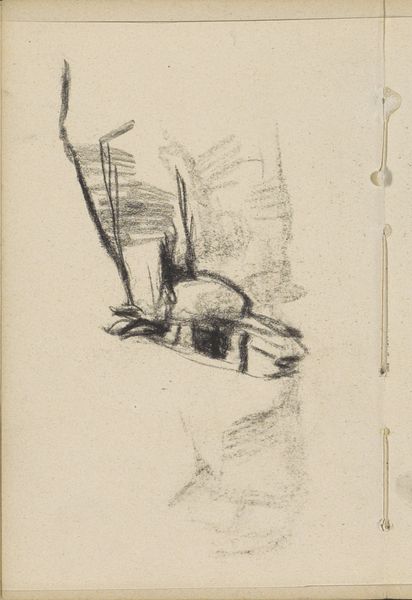
Copyright: Rijks Museum: Open Domain
Editor: Here we have Willem Witsen’s pencil drawing, "Jug and Bowl," created sometime between 1887 and 1897. It’s a rather dark composition. What stands out to you most about its construction? Curator: The density of the mark-making. Observe how Witsen builds up tone and form almost exclusively through the pressure and direction of his pencil strokes. Consider the visual weight he achieves, particularly in rendering the bowl’s volume, solely by varying the hatching and cross-hatching. It begs the question, what does this monochromatic focus tell us about his process? Editor: It makes the simplicity of the objects really stand out. The textures are compelling. Curator: Precisely. Note how the surface quality shifts across the picture plane. In the jug, the lines are more deliberate, creating a clear outline. Compare that to the bowl, where the lines are layered and less defined, blurring the edges and dissolving form into a play of light and shadow. Are we looking at representation or abstraction? Editor: It's somewhere in between, right? The impressionistic style lets it almost fade. I suppose, I wouldn't call it photographic. Curator: Indeed. What's more compelling – how accurately he depicts these objects, or how his treatment of the medium evokes a feeling of stillness, perhaps even a subtle melancholy? Editor: It's more about the feeling for me, it's captivating. I didn't expect so much depth in something made with pencil! Curator: Agreed. The intrinsic elements, the medium and application, cultivate more feeling and depth than mere object representation.
Comments
No comments
Be the first to comment and join the conversation on the ultimate creative platform.
